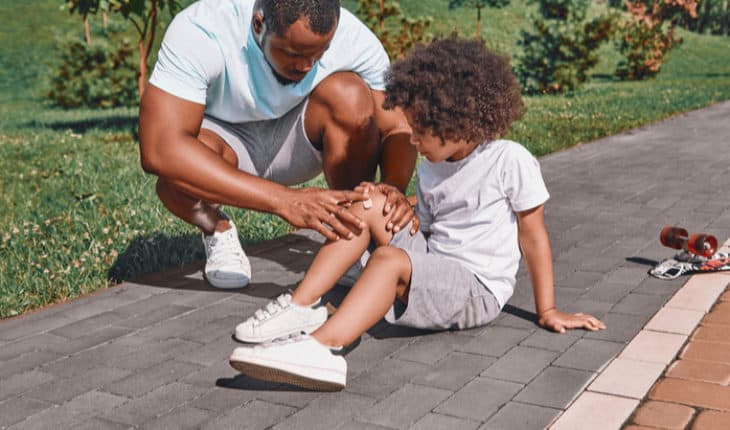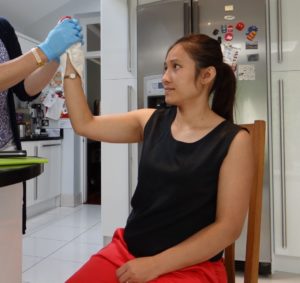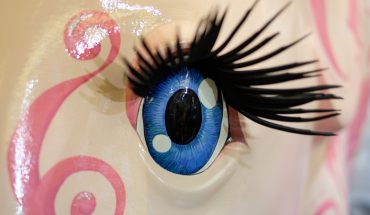Treating Minor Injuries at Home: The NHS is under increasing strain and the UK’s ambulance service is under more pressure than ever. The London Ambulance Service is currently receiving up to 8,000 emergency calls a day. This means that first aid skills are more important than ever. Treating minor injuries at home without going to your GP or hospital helps reduce pressure on medical staff and consequently saves lives.
The home is a common site of accidents and injuries. Due to the numerous lockdowns, many people have started cooking more, and this can lead to an increase in accidents which take place in kitchen. Lots of people are also doing more exercise in the house and DIY has also become more popular. Unwanted injuries may be more likely if these new hobbies are not carried out safely.
It is important to note that if you need urgent medical advice you must get help quickly. The NHS is there for you. Putting off seeking medical help when you do really need it could have serious consequences and make treatment harder.
Read our article about when to call an ambulance for information to help you assess when someone is seriously ill or hurt and make difficult decisions slightly easier.
Bumps and bruises
Bumps and bruises are extremely common minor injuries, especially for adventurous children.
Bruises are bleeding under the skin. Apply a wrapped ice pack for 10 minutes to reduce swelling. After that bruises generally take a couple of weeks to disappear.
Head injuries
Children also frequently bang their heads and it is difficult to tell whether or not they have done any serious damage. Most head injuries are not serious and simply result to a bump or bruise. However, severe or repeated head injuries can cause damage to the brain.
Most blows to the head result in injury to the scalp only and this is more frightening than life-threatening as they may bleed profusely.
It is very important to look out for anything unusual following a head injury; a severe bang on the head could cause swelling and damage to the brain and it is vitally important that you recognise any early and worrying signs of increased pressure on the brain.
Call 999 or 112 if a child:
- has lost consciousness, even momentarily
- won’t stop crying
- complains of head and neck pain
- isn’t walking normally
For bruised heads and head injuries it is important to look for signs of internal head injury and monitor the casualty closely for the next 48 hours.
Call an ambulance if they have or develop any of the following:
- unconsciousness
- obvious serious wound or suspected skull fracture
- abnormal breathing
- pupils of unequal size
- dizziness
- weakness or paralysis
- fitting
- disturbance of speech or vision
- bleeding or clear fluid from the nose, ear, or mouth
- neck pain or stiffness
- vomiting more than once

What to do if the child has not lost consciousness and is alert and behaving normally after the fall or blow:
- Apply a wrapped ice pack or instant cold pack to the injured area for 10 minutes.
- Observe your child carefully for the next 48 hours. If you notice any of the signs of brain injury, phone an ambulance immediately.
- If the incident has occurred close to bedtime or naptime and your child falls asleep soon afterward, check in every few hours to look for twitching limbs or disturbances in colour or breathing. It is okay for your child to go to sleep – there is no need to keep a child awake after a head injury – but you do need to remain vigilant. If you are concerned in any way, wake them up to check on them properly.
Grazes
Grazes are superficial injuries caused by some of the skin being scraped off, leaving a dirty wound. It is never a priority to clean the wound immediately, usually it can be patched up short term with a plaster and then cleaned properly later once you are somewhere where you can wash your hands, wear gloves and use gauze and water or non-alcohol wipes to clean it thoroughly.
- Clean the wound from the inside out and throw away the wipe.
- Repeat this until the wound is completely clean and devoid of any grit or mud.
- Apply a non-adherent dressing pad, shiny side down onto the wound
The dressing can be removed at night to allow the air to get to the wound.
Nose bleeds
Children often have nose bleeds. They can be a result of warm weather or exercise, which dilate the small blood vessels in their nose, or they can be the result of picking or poking noses, or running into things.
If a child has a nose bleed:
- Sit them down.
- Grab something absorbent to catch the blood.
- Lean them forward, pinching the bridge of the nose. Leaning the child forward whilst applying pressure to the nose will allow you to see when the bleeding has stopped and will avoid the blood trickling down the back of their throat which could make them sick. You should apply pressure and try to compress the leaking blood vessel against the inside of the nose to stop it bleeding.
- Keep changing your grip until you have got to a point where no blood is coming out.
- Keep applying pressure for at least 10 minutes.
- Release pressure slightly and if it starts to bleed again hold for another 10 minutes.
- If it really won’t stop bleeding you will need medical help.
Advise them not to pick, poke or blow their nose. If it starts again you will have to apply pressure once more.
Special situation
- If the nose bleed has been caused by trauma, or a punch in the face, controlling the bleeding may be difficult but you need to try as loss of blood is dangerous. You should apply a wrapped ice pack, keep applying pressure and get medical help.
More Serious Bleeds
If someone is bleeding the priority is to stop the blood coming out! ALWAYS WEAR GLOVES WHEN DEALING WITH BLEEDING
It is never a priority to wash a major injury – it will be cleaned in hospital.
Sit or lie the person down – to manage shock and prevent them from feeling dizzy and faint.
Examine the area to see if there is anything stuck in the wound – if there is do not remove it.
Elevate the bleeding area above the level of the heart to slow down the bleeding. Please note that latest guidelines no longer recommend elevation. This alone will not stop bleeding and pressure is more important.
Pressure – apply direct pressure on the wound to stop the blood coming out.
Burns
The ideal treatment for a burn is to get it under cool, running water as quickly as possible. Treatment should ideally use cool running water of 2-15 degrees in Celsius. You should do this for at least a full 20 minutes. Ice and icy water should not be applied to a burn as this can lead to hypothermia.
Keep the casualty warm and look out for signs of shock.
Remove any loose clothing and jewellery as soon as possible however NEVER remove anything that has stuck to a burn.
If a child is burnt and the area is blistered and larger than a 50p; phone for an ambulance immediately.
Once the burn has been cooled for at least 20 minutes, the burn can be loosely covered with cling film or inserted into a sterile plastic bag if appropriate –alternatively keep running it under water until the paramedic arrives if the burn is very large or on an elderly person or child.
Prepare your First Aid Kit
Having a well-stocked and organised First Aid kit to hand at home will be an invaluable resource for when accidents arise.
First Aid kits need to be easily accessible in case an emergency situation arises. The kit should be well organised, ideally in a bag with compartments to allow you to quickly grab what you need. It is most important that the kits contents are good quality – often cheap kits will not be of sufficient quality should you need to use them. The kit should not contain medication.
Your kit should contain a First Aid book or instructions, and contents to treat: major and minor bleeding, burns, breaks and sprains.
Click here to find out exactly what you should put in your First Aid kit.
- First aid for bleeding and treatment for shock - 8th April 2024
- First aid following a stabbing - 8th April 2024
- Tips to reduce the risk of your child choking this Easter - 24th March 2024








